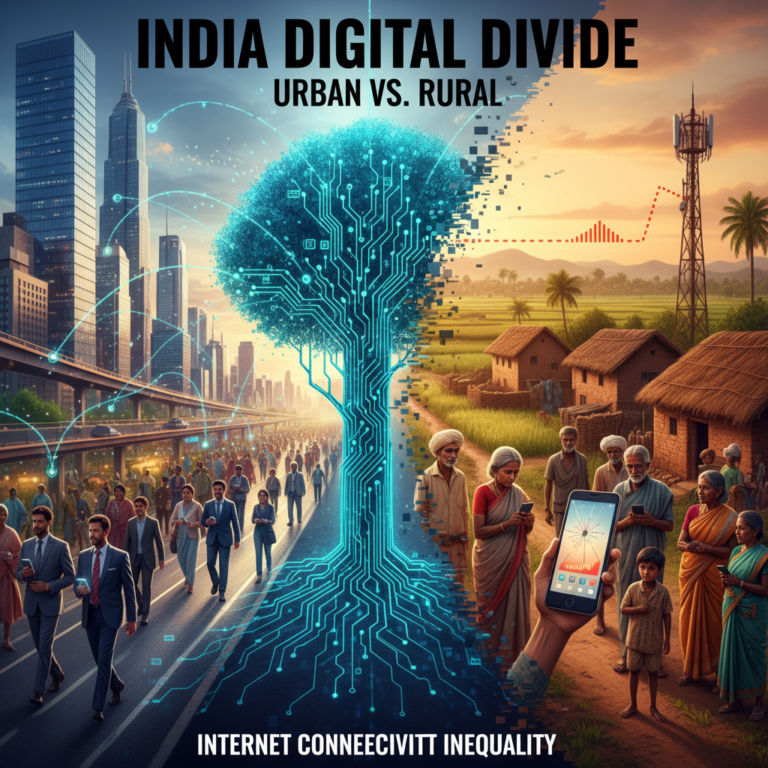India’s Smart City Mission (SCM), launched in 2015, represents a transformative vision of urban development. The aim? To create 100 citizen-friendly and sustainable cities by leveraging technology, innovation, and smart infrastructure. With over 40% of India’s population projected to live in urban areas by 2030, the stakes couldn’t be higher.
However, as the climate crisis intensifies, a critical question emerges: Are India’s smart cities truly climate resilient? Do they have the infrastructural, policy, and technological mechanisms to adapt to rising temperatures, extreme weather, and environmental degradation?
This blog explores the interplay between India’s Smart City Mission and its climate readiness.
Understanding the Smart City Framework
Before diving into climate resilience, it’s important to understand the architecture of the Smart City Mission.
Key Components:
- Area-Based Development: Retrofitting, redevelopment, or greenfield development in selected city areas.
- Pan-City Initiatives: Leveraging technology to improve services like traffic management, waste disposal, and public safety.
- Core Infrastructure: Assured water and electricity, sanitation, affordable housing, efficient urban mobility, robust IT connectivity.
While these aspects are essential for improving quality of life, they also intersect with environmental planning and resilience.
The Climate Vulnerability of Indian Cities
Indian cities are highly vulnerable to climate change. Consider these recent developments:
- Bangalore: Flooded due to inadequate drainage during unseasonal rains.
- Delhi: Suffered from severe heatwaves, poor air quality, and water shortages.
- Mumbai: Experiences annual flooding during monsoons, paralyzing city life.
These recurring challenges underline the need for climate-responsive urban design.
Climate-Proofing Through Smart City Design
Several smart city components inherently support climate adaptation and mitigation. However, the degree of integration varies widely.
1. Urban Mobility and Emissions Reduction
Smart cities promote:
- Electric buses and vehicles
- Bicycle lanes and pedestrian-friendly pathways
- Real-time traffic monitoring to reduce congestion
Success Story: Pune Smart City introduced a public bicycle-sharing program and integrated e-buses to reduce vehicular emissions.
2. Renewable Energy Integration
Many smart cities are incorporating:
- Solar-powered street lights
- Rooftop solar panels
- Net metering policies for homes and businesses
Success Story: Diu became India’s first city to run on 100% renewable energy during the day.
3. Green Building and Cooling Strategies
With increasing urban heat islands, cities are adopting:
- Energy-efficient building codes
- Passive cooling technologies
- Vertical gardens and green roofs
Observation: However, widespread adoption is still limited by lack of incentives and awareness.
4. Smart Water Management
Given water scarcity in urban India, SCM encourages:
- Smart meters for consumption monitoring
- Leak detection systems
- Recycled water for landscaping and sanitation
Success Story: Nagpur has integrated smart water meters and IoT sensors to detect leaks.
5. Waste Management for Emissions Control
Cities are deploying smart bins, waste-to-energy plants, and door-to-door collection with route optimization.
Limitation: In many tier-2 cities, the infrastructure exists on paper but is poorly implemented.
Gaps in Climate Readiness
Despite promising pilot programs, there are significant gaps:
1. Reactive Planning
Most cities still operate reactively. Flood management, for example, is often response-based rather than preventive.
2. Lack of Climate Risk Assessments
Very few smart city proposals include vulnerability assessments or climate risk mapping.
3. Urban Heat Island Ignorance
High-rise buildings and concrete jungles are being added without considering heat-mitigating urban design.
4. Low Community Participation
Citizens are rarely involved in long-term resilience planning.
5. Funding and Capacity Constraints
Most cities struggle with limited municipal budgets and lack of trained personnel to implement green infrastructure.
Climate Readiness Index: How Do Smart Cities Score?
While there is no official climate readiness index within SCM, independent assessments show wide disparity:
- High Performers: Pune, Surat, Ahmedabad
- Average: Indore, Bhopal
- Lagging: Guwahati, Ranchi, and some northeastern cities
Factors considered include solar rooftop adoption, water reuse, early warning systems, disaster resilience, and green cover.
Policy and Institutional Support
To embed climate readiness, there are relevant policies in place:
1. National Adaptation Fund for Climate Change (NAFCC)
Provides financial support to states for climate adaptation projects.
2. State Action Plans on Climate Change (SAPCCs)
Each state has a climate action blueprint, but alignment with SCM varies.
3. Atal Mission for Rejuvenation and Urban Transformation (AMRUT)
Focuses on sustainable infrastructure, which complements SCM.
4. National Electric Mobility Mission (NEMM)
Supports EV infrastructure within smart cities.
5. Urban Greening Guidelines (2022)
Encourages open green spaces, tree-lined roads, and biodiversity zones.
Global Examples for Inspiration
India can learn from climate-ready smart cities globally:
- Singapore: Known for vertical greenery and flood-resistant design.
- Copenhagen: Integrated flood water storage with urban parks.
- Barcelona: Smart sensors to monitor air quality and manage green mobility.
These models balance technology with ecological planning.
Recommendations to Make India’s Smart Cities Climate-Resilient
- Embed Climate Risk Assessments in SCM Guidelines
- Incentivize Solar and Passive Cooling in Buildings
- Integrate Flood Mapping and Drainage Overhaul Plans
- Mandate Urban Green Cover Benchmarks
- Build Community Awareness and Participation Mechanisms
- Strengthen Data Analytics and IoT for Climate Monitoring
- Create a National Climate Resilient City Index
Conclusion: A Smart City Must Also Be a Safe City
India’s Smart City Mission is a bold and visionary step. But technology alone cannot prepare cities for climate change. What is needed is a holistic approach that integrates environmental planning, community participation, and long-term resilience strategies.
The next phase of urbanization in India must be smart, sustainable, and climate-ready — not just for the 100 smart cities, but for every urban settlement striving for a better future.
Read More:
Urban Climate Resilience
Urban Climate Change Resilience: A Synopsis









+ There are no comments
Add yours